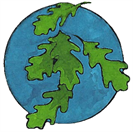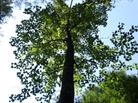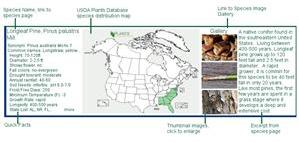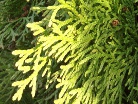


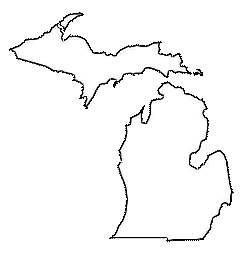
Michigan
The Great Lakes State, 'If you seek
pleasant penninsula,
look about you'
- Trees
- A-Z scientific
- A-Z by Common Name
- Families
- Aceraceae Maple Family
- Anacardiaceae Sumac Family
- Annonaceae Custard Apple Family
- Aquifoliaceae Holly Family
- Arecaceae, Palm Family
- Betulaceae Birch family
- Bignoniaceae Trumpet Creeper Family
- Burseraceae Frankincense Family
- Caprifoliaceae Honeysuckle Family
- Chrysobalanaceae Coco-plum Family
- Cornaceae Dogwood Family
- Cupressaceae Cypress Family
- Cyrillaceae Cyrilla Family
- Ebenaceae Ebony Family
- Ericaceae Heath Family
- Fabaceae Pea Family
- Fagaceae Beech Family
- Hamamelidaceae Witch Hazel Ffamily
- Hippocastanaceae Horse Chestnut Family
- Juglandaceae Walnut Family
- Lauraceae Laurel Family
- Leitneriaceae Corkwood Family
- Magnoliaceae Magnolia Family
- Meliaceae Mahogany Family
- Moraceae Mulberry Family
- Myricaceae Bayberry Family
- Myrsinaceae Myrsine Family
- Myrtaceae Myrtle Family
- Nyctaginaceae Four Oclock Family
- Olacaceae Olax Family
- Oleaceae Olive Family
- Pinaceae Pine Family
- Platanaceae Plane Tree Family
- Polygonaceae Buckwheat Family
- Rhamnaceae Buckthorn Family
- Rosaceae Rose Family
- Rubiaceae Madder Family
- Rutaceae Rue Family
- Salicaceae Willow Family
- Sapindaceae Soapberry Family
- Sapotaceae Sapodilla Family
- Simaroubaceae Quassia Family
- Styracaceae Storax Family
- Symplocaceae Sweetleaf Family
- Theaceae Tea Family
- Tiliaceae Lindon Family
- Ulmaceae Elm Family
- Taxaceae Yew Family
- Yucca Family
- Browse by State
- Rare or Endangered Species
- Trees_with_Special_Uses
- Tallest and Biggest
- Noxious Weeds
- Causes
- About Us
- Our Stores


™

Native Trees of Michigan

Custom Search
Home>Browse by State>Michigan

Want to add your tree to our picture gallery? Click here for details!
-Color denotes a tree that is rare or endangered

Tree lists:
•A-Z by scientific
name
•A-Z by common
name
•By Family
For state A-Z list click state name below.
•A-Z by scientific
name
•A-Z by common
name
•By Family
For state A-Z list click state name below.

State Tree: Eastern White Pine
The forests of Michgan cover over 50%
the state and harbor a rich diversity thanks to the multitude of habitats. The most heavily forest area is the northern peninsula, where vast stretches of forest encompass more than 80% of the land area. Michigan is actually ranked in the top 10 most forested states in all of the USA. Previous to European settlement, it is estimated the forests comprised 90-95% of the land area. With so much readily available to harvest, it is no wonder so much of the timber used to reconstruct Chicago after the great fire came from the forests of Michigan.
the state and harbor a rich diversity thanks to the multitude of habitats. The most heavily forest area is the northern peninsula, where vast stretches of forest encompass more than 80% of the land area. Michigan is actually ranked in the top 10 most forested states in all of the USA. Previous to European settlement, it is estimated the forests comprised 90-95% of the land area. With so much readily available to harvest, it is no wonder so much of the timber used to reconstruct Chicago after the great fire came from the forests of Michigan.
Maples are the most abundant tree species found in the state, especially in the northern half. The tallest tree currently in Michigan is actually a red maple, claiming the title after an old growth eastern white pine fell. Red and eastern white pines can be found in the southern half where the forests change from northern hardwood type to old growth pine forests. Threats to the forests are Birch bark disease, emerald ash borer (EAB), and hemlock wooly adelgid. Foresters are closely monitoring the spread of these as the potential for significant forest damage is high. Remember, never transport firewood! The insect pests love to hide in it and hitch a ride!

Michigan Native Tree Facts

Forested acres: 20 million
Percent of total area forested: 53%
Predominant Forest Type(s): Sugar maple-beech-yellow birch, hard maple-basswood, northern white cedar, red pine
Number of National Forests: 3
Number of State Forests: 28
Number of Tree city USA communities: 120
Number of invasive tree species: 4 (see state list for noxious/invasive plants)
Insects of Concern: Emerald Ash Borer, Asian Longhorned Beetle, Balsam Wooly adelgid
Pathogens of Concern: Sudden Oak Death, Beech Bark Disease
Number or Rare, Threatened or Endangered Species: 5
Number of tree families in our collection: 25
Sources:
Arborday.org
US Forest Service
Michigan Department of Natural Resources
United States Department Of Agriculture, Natural Resources Conservation Services: PLANTS Database
Additional state resources:
Michigan State Parks and Trails
University of Michigan Extension Service
Percent of total area forested: 53%
Predominant Forest Type(s): Sugar maple-beech-yellow birch, hard maple-basswood, northern white cedar, red pine
Number of National Forests: 3
Number of State Forests: 28
Number of Tree city USA communities: 120
Number of invasive tree species: 4 (see state list for noxious/invasive plants)
Insects of Concern: Emerald Ash Borer, Asian Longhorned Beetle, Balsam Wooly adelgid
Pathogens of Concern: Sudden Oak Death, Beech Bark Disease
Number or Rare, Threatened or Endangered Species: 5
Number of tree families in our collection: 25
Sources:
Arborday.org
US Forest Service
Michigan Department of Natural Resources
United States Department Of Agriculture, Natural Resources Conservation Services: PLANTS Database
Additional state resources:
Michigan State Parks and Trails
University of Michigan Extension Service
Michigan Native Tree Families and Genera

Useful information while browsing species:
• How to read a botanical name
• How to use our species boxes:
• How to read a botanical name
• How to use our species boxes:
Additional Resources:
North American Native Tree Families
North American A to Z List by Scientific Name
North American A to Z List by Common Name
North American Native Tree Families
North American A to Z List by Scientific Name
North American A to Z List by Common Name
click to enlarge.
-Color denotes a tree that is rare or endangered

Please note: This is not a complete list of all native tree families and species found in Michigan. We are constantly working towards a more comprehensive list and will add families and their species as completed.
Follow the links to view species native to Michigan. If the genus is not linked, species are listed on the family page.
Aceraceae, Maple
Anacardiaceae, Sumac
Rhus, Sumac
Toxicodendron, Poison Sumac
Annonaceae, Custard-Apple
Betulaceae, Birch
Betula, Birch
Carpinus, Hornbeam
Corylus, Hazelnut
Ostrya, Hophornbeam
Bignoniaceae, Trumpet Creeper
Caprifoliaceae, Honeysuckle
Cornaceae, Dogwood
Cornus, Dogwood
Nyssa, Tupelo
Cupressaceae- Cypress
Juniperus, Juniper
Thuja, Arborvitae
Aceraceae, Maple
Anacardiaceae, Sumac
Rhus, Sumac
Toxicodendron, Poison Sumac
Annonaceae, Custard-Apple
Betulaceae, Birch
Betula, Birch
Carpinus, Hornbeam
Corylus, Hazelnut
Ostrya, Hophornbeam
Bignoniaceae, Trumpet Creeper
Caprifoliaceae, Honeysuckle
Cornaceae, Dogwood
Cornus, Dogwood
Nyssa, Tupelo
Cupressaceae- Cypress
Juniperus, Juniper
Thuja, Arborvitae
Fabaceae, Pea
Gleditsia, Locust
Fagaceae, Beech
Quercus, Oak
Hamamelidaceae, Witch-hazel
Hippocastanaceae, Horse-chestnut
Juglandaceae, Walnut
Carya, Hickory
Juglans, Walnut
Lauraceae, Laurel
Magnoliaceae, Magnolia
Moraceae, Mulberry
Morus, Mulberry
Oleaceae, Olive
Fraxinus, Ash
Pinaceae, Pinus
Abies, Fir
Pinus, Pine
Gleditsia, Locust
Fagaceae, Beech
Quercus, Oak
Hamamelidaceae, Witch-hazel
Hippocastanaceae, Horse-chestnut
Juglandaceae, Walnut
Carya, Hickory
Juglans, Walnut
Lauraceae, Laurel
Magnoliaceae, Magnolia
Moraceae, Mulberry
Morus, Mulberry
Oleaceae, Olive
Fraxinus, Ash
Pinaceae, Pinus
Abies, Fir
Pinus, Pine
Platanaceae, Plane-tree
Platanus, Sycamore
Rosaceae, Rose
Crataegus, Hawthorn
Rubiaceae, Madder
Rutaceae, Rue
Salicaceae, Willow
Populus, Cottonwood
Salix, Willow
Tiliaceae, Lindon
Tilia, Basswood
Ulmaceae, Elm
Celtis, Hackberry
Ulmus, Elm
Platanus, Sycamore
Rosaceae, Rose
Crataegus, Hawthorn
Rubiaceae, Madder
Rutaceae, Rue
Salicaceae, Willow
Populus, Cottonwood
Salix, Willow
Tiliaceae, Lindon
Tilia, Basswood
Ulmaceae, Elm
Celtis, Hackberry
Ulmus, Elm
Native plant species considered rare in Michigan meet one or
more of the following state categories based on biological
research and/or inventory:
• Threatened- T- any species which is likely to become an endangered
species within the foreseeable future throughout all or a significant portion
of its range.
Michigan Endangered or Threatened Tree Species

Additional Resources:
North American Rare and Endangered Trees
External Links:
USDA PLANTS Database
Full Michigan Rare Plant List
North American Rare and Endangered Trees
External Links:
USDA PLANTS Database
Full Michigan Rare Plant List
Looking for a nursery near you?
Check out our nursery listing by county below!
Sorry, we do not currently have any tree nursery listings for this state. We do update these lists, so please check back.
Check out our nursery listing by county below!
Sorry, we do not currently have any tree nursery listings for this state. We do update these lists, so please check back.



• Endangered- E- any species of fish, plant life, or wildlife that is in danger of extinction throughout all or a significant part of its
range, other than a species of insecta determined by the department or the secretary of the United States department of the interior
to constitute a pest whose protection under this part would present an overwhelming and overriding risk to humans.
Tree species with status present in Michigan (see related links for full list):
Special Concern:
Betula murrayana- Murray Birch
Betula populifolia- Gray Birch
Crataegus douglasii- Douglas Hawthorn
Euonymus atropurpurea- Burningbush, Wahoo
Quercus shumardii- Shumard Oak
Viburnum prunifolium- Blackhaw
Threatened:
Fraxinus profunda (Bush) Bush- Pumpkin Ash
Morus rubra L.- Red Mulberry
Salix planifolia Pursh- Diamondleaf Willow
Endangered:
Castanea dentata (Marshall) Borkh.- American chestnut
Populus heterophylla L.- Swamp cottonwood
Castanea dentata (Marshall) Borkh.- American chestnut
Populus heterophylla L.- Swamp cottonwood
Eastern White Pine is the state tree of several states. Michigan made it theirs in 1955. Of all the native conifers calling eastern North America home, this tree is the tallest. It towers at 150 feet and lives as long as 450 years- sometimes longer. It most likely used to grow even taller and older before the colonist arrived.
Eastern white pine's bark is smooth and gray on young trees, becoming broken into small plates when mature. The root system is deep, 40 inches or so, with spreading laterals and has no distinct tap root. The needles are 3-5 inches long, bundled in 5's and dark green. They are soft, flexible, and persist to the
Eastern white pine's bark is smooth and gray on young trees, becoming broken into small plates when mature. The root system is deep, 40 inches or so, with spreading laterals and has no distinct tap root. The needles are 3-5 inches long, bundled in 5's and dark green. They are soft, flexible, and persist to the
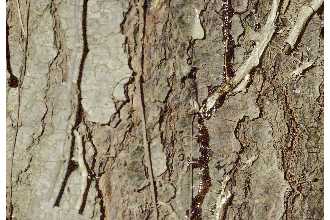
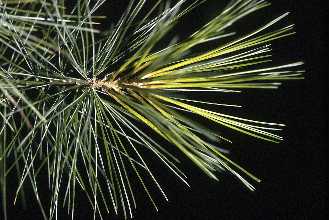
Photo citation: Robert H. Mohlenbrock USDA NRCS 1995. Northeast wetland flora; Field office guide to plant species. Northeast National Technical Center, Chester
Photo citation: Robert H. Mohlenbrock USDA NRCS 1995. Northeast wetland flora; Field office guide to plant species. Northeast National Technical Center, Chester
the second year. Beginning at age 5-10, curved, 4-8 inch long spine free cones start growing. Male strobili open and disperse pollen from April to June, depending on location. It will take 2
years for cones to mature. Seeds are typical of pines in their small size, .08 inches, brown color and single winged. Dispersal is from August to September.
Learn More
Learn More
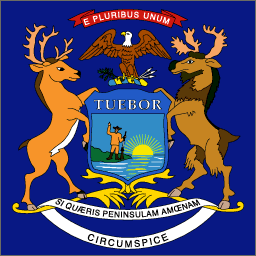
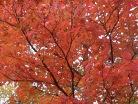
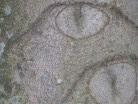
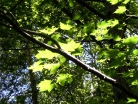
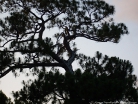
We are part of the Hubpages community.
Click here for more info.
Click here for more info.
